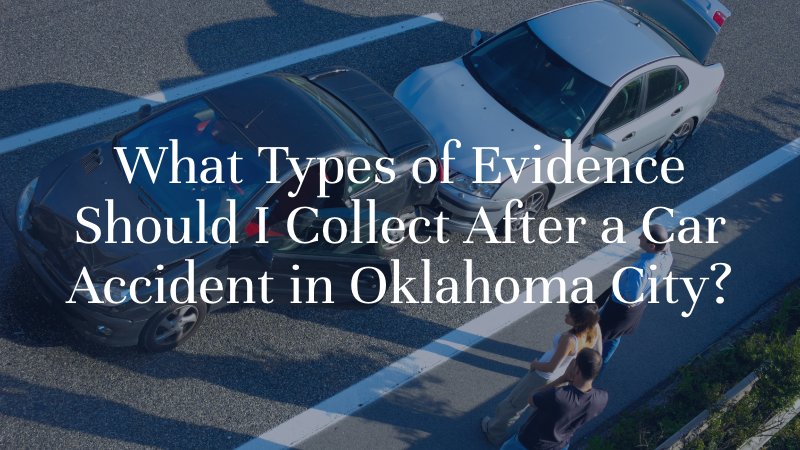What Types of Evidence Should I Collect After a Car Accident?

A serious car accident can be a terrifying experience, especially when it results in severe injuries. In fault-based insurance states like Oklahoma, it matters how the accident occurred and who caused or contributed to it. Unlike the handful of no-fault insurance states where car accident victims file claims against their own insurance after an accident, Oklahoma’s insurance laws require injury victims to prove another driver caused the accident and file claims against the at-fault driver’s insurance to recover their losses. To make a successful claim, it’s important to provide compelling evidence of driver liability. Unfortunately, police and other emergency responders must quickly clear away an accident scene to restore traffic flow, obliterating important evidence. By keeping the presence of mind you need to protect yourself after an accident, you can preserve critical evidence—mostly through your cell phone.
Preserving Evidence at the Scene of an Accident
If you are seriously injured after a car accident, you may be unconscious, incapacitated, or trapped in your vehicle. You may be unable to move without causing further injury. In this case, it may be impossible to use your phone to capture evidence at the scene. If you can move safely, you can use your cell phone to document evidence. You may be able to do so from your position without moving a great deal. You can also hand your phone to an uninjured person or ask them to use their own and then do the following:
- First, call 911 to report the accident and request help and if you’re mobile, render any necessary first aid to others
- Then, leaving the 911 call connected, switch to your camera app and take photos of the damaged vehicles
- Photograph the scene of the, including anything relevant such as traffic signals, signs, or an intersection
- Photograph skid marks or the lack of skid marks
- Photograph any visible injuries
- Add the contact information of the other driver(s)
- Add the contact information of eyewitnesses who may be critical in accident cases in locations without traffic cameras or nearby surveillance cameras. Often, eyewitnesses leave the scene without leaving a name
- Then, if you have time, record a brief audio or video of yourself telling what you remember about the accident. Often, memories fade later due to trauma
Always go straight to the hospital after the accident, preferably in the ambulance. This helps to document evidence that your injuries occurred in the accident and nowhere else.
Collecting Evidence at the Hospital and in the Days Following a Car Accident
At the hospital, be sure to ask the doctor for a detailed medical report listing your injuries, the treatment recommended for them, and your prognosis for recovery. It’s important to tell the medical providers about every symptom, even the mild ones so they can document the injury and potentially catch any injuries that might worsen over time. Many types of injuries have delayed symptoms, especially during the adrenaline rush after an accident. Be sure to carefully follow your doctor’s orders and save all medical bills and receipts for related expenses.
Ask for a copy of the police report and your medical report, and then call a car accident attorney to represent your interests with the insurance company of the at-fault driver.
Understanding Contributary Fault in a Modified Comparison Negligence Car Accident State
States like Oklahoma allow accident victims to recover a portion of their damages like medical expenses, lost income, and pain and suffering compensation even if they were partly at fault in an accident under 1979, OK c. 38, § 1 . Sadly, insurance companies commonly assign injury victims an undue percent of fault to protect their profits by taking advantage of this system. By documenting evidence and hiring a personal injury attorney in Oklahoma City to make a compelling case, you can prove fault and recover full compensation for damages.